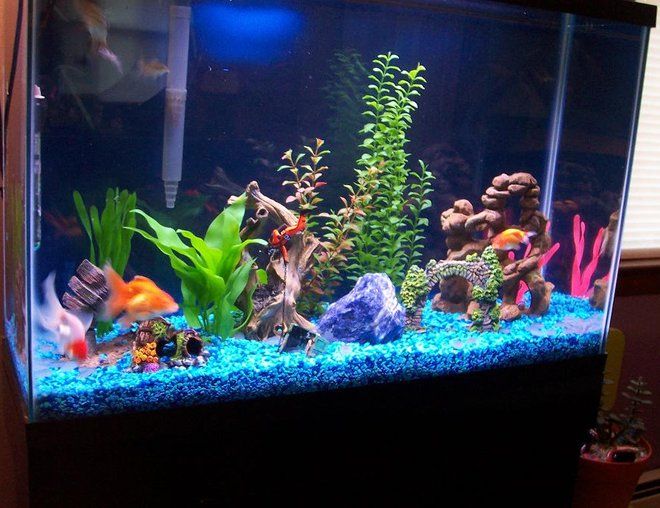Maintain the cleanliness of your aquarium by using a reliable aquarium heater. A quality aquarium heater is simple to use, durable, and accurate.
The heaters must be located near circulators or filters to help distribute heat more efficiently. They should be kept away from other heating sources like flames, heat lamps, or hot decorations to avoid overheating.
Types
The right temperature of the water is essential for fish. All tropical fish, with the exception of certain species that require cold water, need warm water to thrive. If you don’t keep the proper temperature of your water the fish could suffer from stress, illnesses and even death.

Aquarium heaters are an important component for the proper care of your pets in the water. They utilize electricity to warm the water and they are available in various sizes. They can be hang-on or submersible, and both are able to be adjusted to meet your desired tank water temperature. Choose a fully submersible aquarium heater to avoid the risk of an electric leakage. This can also help ensure the heat is distributed evenly throughout the tank.
Hang-on aquarium heaters sit on the back of the tank. They are generally positioned a few inches up from the bottom. These heaters are generally placed near the filter outlet or inlet. They return heated water back into the tank. The price of this kind of heater is typically less than the submersible heater. However, it might not be able distribute the heat evenly. Be sure to keep an eye on the tank and use a thermometer for confirmation.
Submersible
Unlike rim-mount heaters, submersible aquarium heaters are fully enclosed. They are more durable and available in different sizes to fit in with any tank. Some even include an electronic thermometer to double-check the accuracy of the setting. They also are resistant to moisture and have internal and external sealings that provide excellent leak protection. Tanks use between 5 and 10 watts according to their size.
A favorite choice among tank owners The heater is simple to set up and works well for small tanks. The flat profile allows it to be placed in tight areas. The device also comes with the ability to control it with one touch and a safeguard against overheating. Plus, it’s made with tough plastic that is resistant to cracking and breaking.
Be sure to unplug the tank heater before changing the water. Failure to do so could result in an immediate — and possibly life-threatening electric shock. The best way to avoid this is to connect an electronic device that detects when the tank is being draining, and then notify an individual immediately to stop the power supply to the heater before it is turned off automatically.
This heater is specifically designed to maintain your aquarium at a steady 78 degrees. The thermostat’s electronic design helps to prevent overheating, and also extends the life of the heater. It features silicon carbide crystals that enhance heat transfer and distribution, as well as the strength of a glass tube that’s extremely shock- and heat-resistant. It’s easy to install: simply attach it to the tank wall using the suction cup.
Heater Wattage Calculation
The job of the heater is to channel energy from the incoming power lines into heating coils that convert the energy into heat thereby increasing the temperature of the water. The higher the wattage of the heater, the greater heat it can deliver per unit volume aquarium water.
To increase the temperature by one degree, it requires around half a one watt. To figure out how much the wattage that your tank requires take the temperature of your room from the desired temperature for your aquarium and divide that number by your tank size. For example, a 10 gallon tank in a room that has 70 degrees requires 3 watts of heating per day to raise the temperature of water by 5 degrees.
It is advisable to pick an aquarium heater with at least 5 watts per gallon. You can easily adjust the temperature of your tank.
Consider that any other electrical equipment in thiet ke be ca canh bien aquarium adds to the power required to maintain a certain temperature. For example, a fifty submerged sump pump that is rated at 50 watts is like running a twenty watt heater 24 hours a day seven days a week. And, a circulation powerhead can add 5 or 10 watts of heater energy every day.
Adjustable
If you own a huge aquarium, then multiple heaters are usually required to maintain the ideal temperature of the water. An adjustable aquarium heater allows you to control the wattage of heating to fit the size of your tank as well as the requirements of the fish living in the tank.
The heater for the aquarium can be placed in the tank in the bottom, to keep away from any clutter or it can be attached to the filter in the tank. Choose a heater that comes with an independent thermometer to monitor its performance. It can ensure that the temperature in the aquarium stays constant and will prevent overheating.
Another important point to be aware of is that having too many heaters into a small tank could cause them to turn on and off frequently. This may cause the heaters to wear out and may cook the fishes. The best practice is to use a separate controller that cuts off the heaters if it is over the specified temperature.
The majority of aquarium heaters come with safety features that prevent overheating. Some have an indicator light which comes to life when the unit is switched off and on. There is also an electrical fuse that shuts off the power after a certain amount of time, preventing damage to the unit. Some heaters have an integrated thermometer. It is best to plug the aquarium heater into an outlet located in a warm area. This can lower the pressure and prolong its life.
